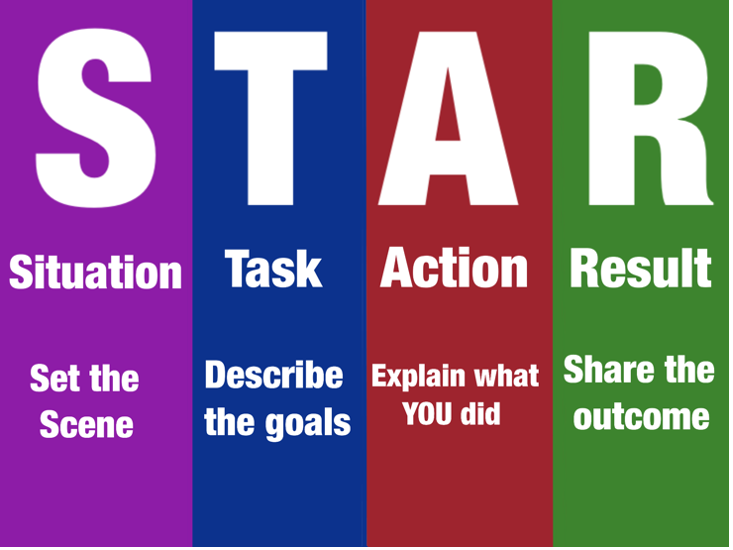Job Interview Tips: How To Increase Your Chances of Success
The landscape of job interviews has transformed dramatically over the years. Traditional face-to-face meetings have given way to a mix of virtual and in-person interactions, reshaping the hiring process. With a 57% increase in the use of video interviews from 2019 to 2024 and 84% of employers reporting improved diversity in applicant pools due to virtual interviews, it’s crucial to understand and adapt to these changes to stand out in today’s competitive job market.
1. Preparing for Your Interview
Understand the Interview Format:
- Knowing the format of your interview is crucial. Whether it’s an in-person, video call, or a phone interview, each format has its own set of expectations and preparations. If you haven’t received detailed information from the hiring manager, ask your recruiter for insights into the typical interview process at the company.
Research the Interviewer and Company:
- Investigate your interviewer’s career and background. A simple Google search can yield valuable information, including their LinkedIn profile. Thoroughly explore the company’s website, recent news articles, and their social media presence. Understanding the company’s history, cultural values (very important in HR), and current projects can help you align your responses to show how your values and skills / previous companies worked for, match theirs.
Enhance Your Digital Presence:
- Ensure your LinkedIn profile and other professional online profiles are up-to-date and accurately reflect your latest achievements. This is especially important if your interview is conducted virtually, as employers often review these profiles beforehand. Familiarise yourself with the video conferencing platform to avoid technical glitches during the interview.
Create an Optimal Interview Environment:
- Choose a quiet, well-lit space free from distractions. A professional background and good lighting can help present you in the best possible light. Practice digital etiquette by maintaining eye contact, using natural hand gestures, and sitting up straight to convey confidence and engagement.
Know Your CV:
- Be thoroughly familiar with your CV. Be prepared to discuss any gaps in your employment history and to answer detailed questions about your past experiences. Tailor your responses to highlight how your previous roles have prepared you for the position you’re interviewing for.
2. Minimising Pre-Interview Stress
Early Preparation:
- Start your preparation early to allow ample time for thorough research and to develop responses to potential questions. Plan your outfit the day before to ensure it’s appropriate and professional. If in doubt, ask your recruiter for guidance on the company’s dress code.
Self-Talk and Relaxation Techniques:
- Practice positive self-talk to combat negative thoughts. Remind yourself of your achievements and why you’re a strong fit for the role. Engage in relaxation techniques such as deep breathing exercises or meditation to calm your nerves.
Physical Preparation:
- Ensure you get a good night’s sleep before the interview and have a healthy breakfast on the day of the interview. Arriving early or logging in early for virtual interviews helps you settle down and avoids the stress of being late.
3. Pre-Interview Checklist
Company Research:
- Thoroughly research the company’s website and any recent news about them. Understand their products, services, market position, and competitors.
Professional Attire:
- Dress appropriately for the interview, whether it’s virtual or in-person. Dressing professionally boosts your confidence and makes a positive impression.
- Talk to us about what environment you are walking into – we can help and advise
Common Questions:
- Prepare rough outlines for answers to common interview questions but avoid memorising them word-for-word. Natural, conversational responses are more engaging.
Job Description:
- Know the job description thoroughly. Understanding the responsibilities and requirements helps you tailor your responses to demonstrate how your skills and experience align with the role.
Skills Fit:
- Identify how your skills and experiences meet the job requirements. Be ready to discuss specific examples that showcase your suitability for the role.
Questions for the Interviewer:
- Prepare thoughtful questions about the company, team, and role. This demonstrates your interest and helps you assess if the company is the right fit for you.
4. How to Act During the Interview
First Impressions:
- First impressions matter. Arrive early, greet the interviewer warmly, make eye contact, and smile. Your body language and initial interaction set the tone for the interview.
Discussing Your CV:
- When discussing your CV, focus on the most relevant experiences and recent roles. Highlight achievements and responsibilities that align with the job you’re applying for. Be prepared to explain any gaps in your employment history.
Asking Questions:
- Asking questions during the interview shows your engagement and interest. Some key questions to consider include:
- What’s the company culture like?
- What are the opportunities for professional development?
- Can you tell me about the team I would be working with?
- What are the key performance indicators for this role?
- What are the biggest challenges facing the team/department right now?
Competency-Based Questions:
- Competency-based questions aim to reveal specific skills and behaviours through past experiences. Use the STAR technique (Situation, Task, Action, Result) to structure your responses:
- Situation: Describe the context within which you performed a task or faced a challenge. (Keep Short – i.e. 1 sentence)
- Task: Explain the actual task YOU had to perform (NOT your manager or anyone else in your team)
- Action: Detail the specific actions YOU took to address the task or challenge. (Use ‘I’ – this is what YOUR part was)
- Result: Share the outcomes or results of your actions, quantifying them when possible. Make sure this is a positive result!
Handling Strengths and Weaknesses:
- When discussing strengths, focus on those relevant to the job and support them with examples. For weaknesses, choose an area where you’ve made progress or are actively working to improve, demonstrating self-awareness and a commitment to personal development or one which is not required for the job!
Engaging with Your Interviewer:
- Maintain eye contact, nod to show you’re listening, and demonstrate enthusiasm for the role and company. Remember, the interview is a two-way street; you’re also evaluating if this role and company align with your career aspirations.
- Read non-verbal cues from your interviewer – Is your answer what they are looking for?
- Ask if you are not sure
- Are you going off track? – Stay attentive and really listen to them and understand what they are looking for.
Closing the Interview:
- Thank the interviewer for their time, reiterate your enthusiasm for the role, and summarise why you believe you’re a strong fit. Ask about the next steps in the hiring process to demonstrate your eagerness and proactive attitude.
5. Key Interview Questions
1. Tell me about yourself:
- Craft a concise, engaging summary of your professional background, focusing on experiences relevant to the role. Highlight key achievements and explain how your career trajectory has prepared you for this opportunity.
2. Why do you want to work here?:
- Demonstrate your knowledge of the company, its values, and its industry. Explain how your skills and career goals align with the company’s mission and how you can contribute to its success.
3. What are your strengths?:
- Choose strengths that are relevant to the job and support them with examples. Show how these strengths have helped you achieve positive outcomes in previous roles.
4. What are your weaknesses?:
- Be honest but strategic. Select a weakness you’ve actively worked on improving, and discuss the steps you’ve taken to address it and the progress you’ve made.
5. Describe a challenging situation and how you handled it:
- Use the STAR technique to outline a specific challenge, your approach to addressing it, and the positive outcome. This question assesses your problem-solving and resilience.

6. Why did you leave your last job?:
- Frame your response positively, focusing on what you’re looking for in a new role rather than criticising your previous employer. Emphasise your desire for growth, new challenges, or a better cultural fit.
7. Where do you see yourself in five years?:
- Show ambition and forward-thinking, aligning your career aspirations with the company’s goals. Demonstrate your commitment to professional growth and long-term contributions.
- Align the motivations to the scope of the role and bear in mind any limitations.
- Also show your flexibility, if required, aligned to the job you are going for.
8. Why should we hire you?:
- Summarise your unique qualifications, experiences, and personal attributes that make you an ideal fit for the role. Highlight your enthusiasm for the position and your potential to add value to the team.
6. Post-Interview Actions
1. Immediate Follow-Up:
- As soon as possible after the interview, jot down your thoughts about the interview. Note key points discussed, questions asked, and any additional thoughts about the role or the company.
2. Call Your Recruiter:
- Provide feedback on the interview to your recruiter. Share your impressions, any concerns, and positive highlights. They can offer valuable insights and advice for future steps.
3. Reflect on Your Performance:
- Take time to reflect on how you performed during the interview. Identify areas where you did well and areas for improvement. Use this reflection to prepare for future interviews and build on your strengths.
4. Plan Your Next Steps:
- Based on feedback from your recruiter and the company, plan your next steps. This might involve preparing for a second interview, following up if you haven’t heard back in a week or two, or considering other opportunities if this one doesn’t work out.
Summary
The modern job interview process has evolved, with virtual interactions becoming more common and bringing diverse benefits. Success in interviews requires thorough preparation and adaptability. Understanding the interview format, researching the company and interviewer, and enhancing your digital presence are essential steps. Minimising pre-interview stress through early preparation and relaxation techniques can boost confidence.
During the interview, making a strong first impression, effectively discussing your CV, and asking thoughtful questions demonstrate your suitability. Using the STAR technique for competency-based questions and addressing strengths and weaknesses strategically showcase your skills. Following up with a thank-you email and reflecting on your performance leaves a positive impression and helps improve
